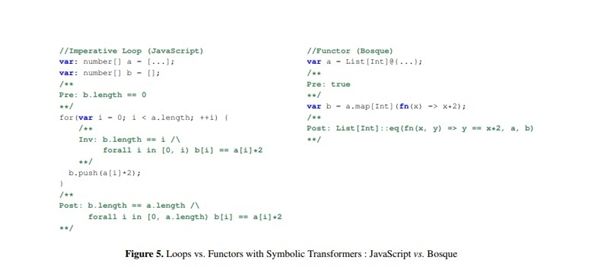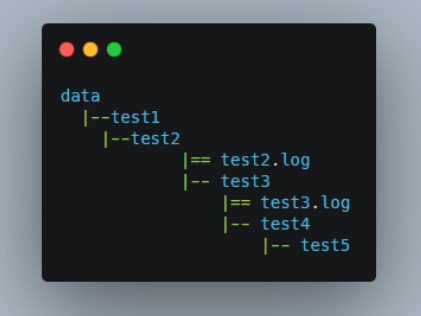python中的iterator和"lazy iterator"区别是什么
 发布于2023-04-28 阅读(0)
发布于2023-04-28 阅读(0)
扫一扫,手机访问
在 Python 中,迭代器是一个对象,它使你能够遍历一个值的序列,如一个列表或元组。它通过实现两个方法来工作: __iter__() 和 __next__()。__iter__() 方法返回迭代器对象本身,而 __next__() 方法返回序列中的下一个值。当没有更多的值可以返回时,它会引发一个 StopIteration 异常。
标准自定义的iterator :
class Squares: def __init__(self, n): self.n = n self.current = 0 def __iter__(self): return self def __next__(self): if self.current >= self.n: raise StopIteration else: result = self.current ** 2 self.current += 1 return result # Using the iterator squares = Squares(5) for square in squares: print(square)
在 Python 中,iter() 是一个内置函数,它为一个给定的可迭代对象返回一个迭代器。
一个可迭代的对象是任何可以被循环的对象,如列表、元组、集合、字典或定义了 __iter__() 方法的自定义对象。
当对一个可迭代对象调用 iter() 时,它返回一个迭代器对象,使用 next() 方法从可迭代对象中一次提供一个数值序列。
iter()函数通常与循环和其他迭代器一起使用,以执行过滤、映射和减少一个序列的元素等任务。
用iter()函数创建的迭代器:
numbers = [1, 2, 3, 4, 5] iterator = iter(numbers) print(next(iterator)) # Output: 1 print(next(iterator)) # Output: 2 print(next(iterator)) # Output: 3
lazy iterator :
一个 "懒惰迭代器 "是一个特殊类型的迭代器,它不会预先生成序列中的所有值。相反,它在需要的时候生成它们。当处理非常大的或无限大的序列时,这很有用,因为它避免了一次生成所有的值和消耗大量的内存。
在Python中,懒惰迭代器经常使用生成器函数来实现(生成器是使用yield关键字的函数),一次返回一个值。每次请求一个值的时候,生成器就在它离开的地方继续工作,并生成序列中的下一个值。
# Define a generator function that yields values lazily def fibonacci(): a, b = 0, 1 while True: yield a a, b = b, a + b # Use the lazy iterator to print the first 10 Fibonacci numbers fib = fibonacci() for i in range(10): print(next(fib))
本文转载于:https://www.yisu.com/zixun/783241.html 如有侵犯,请联系admin@zhengruan.com删除
产品推荐
-

售后无忧
立即购买>- DAEMON Tools Lite 10【序列号终身授权 + 中文版 + Win】
-
¥150.00
office旗舰店
-

售后无忧
立即购买>- DAEMON Tools Ultra 5【序列号终身授权 + 中文版 + Win】
-
¥198.00
office旗舰店
-

售后无忧
立即购买>- DAEMON Tools Pro 8【序列号终身授权 + 中文版 + Win】
-
¥189.00
office旗舰店
-

售后无忧
立即购买>- CorelDRAW X8 简体中文【标准版 + Win】
-
¥1788.00
office旗舰店
-
正版软件
- 教程:利用PyCharm打包Python代码为EXE
- 在本文中,我们将介绍PyCharm中的一种常用方法,通过使用PyInstaller将Python代码打包成可执行的EXE文件。PyInstaller是一个用于将Python应用程序转换为独立的可执行文件的工具,它可以将Python代码打包成EXE、APP、Linux等格式,方便用户在没有安装Python解释器的环境中运行Python程序。步骤一:安装PyIn
- 11分钟前 Python Pycharm 打包 0
-
正版软件
- 优化代码效率:Golang数据格式转换的高效方法
- Golang数据转换方法:提升代码效率的数据格式转换技巧随着软件开发的不断发展,不同系统之间的数据交互变得越来越普遍和重要。在实际项目中,我们经常需要对不同的数据格式进行转换,例如将JSON数据转换为结构体,或者将结构体转换为XML等。在Golang语言中,通过一些高效的数据转换方法,可以显著提升代码的效率和可维护性。本文将介绍一些常用的数据格式转换技巧,并
- 17分钟前 Golang 代码效率 数据转换 0
-
 正版软件
正版软件
- 深入探讨 Java JMX:解密不为人知的监控与管理功能
- 深入了解JMXJMX是一套标准化api,用于监控和管理Java应用程序。它允许应用程序暴露其内部状态和行为,并提供了一种机制来动态配置和修改这些方面。核心概念是MBean(ManagedBean),它封装了被管理对象的信息和操作。MBean遵循分层模型,包含以下类型:StandardMBeans:提供标准接口,定义一组属性、操作和通知。DynamicMBeans:允许动态创建和修改其属性和操作。ModelMBeans:代表其他MBean的代理,提供管理委托。MBeanServer:管理MBean的中心组件
- 27分钟前 监控 管理 MBean Java JMX 0
-
正版软件
- 探讨Golang错误处理机制的底层实现原理
- Golang是一门由谷歌开发的开源编程语言,被广泛应用于Web开发、云计算等领域。其中的错误处理机制在语言设计中被特别强调,在编写Go程序时,合理处理错误是至关重要的。本文将从源码角度解析Golang错误处理的实现原理,并通过具体的代码示例来帮助读者更好地理解该机制的工作原理。在Go语言中,错误处理是通过error接口来实现的。error是一个接口类型,其定
- 37分钟前 Golang 错误处理 源码解析 0
-
正版软件
- Go和Golang:解析两者之间的差异
- Go和Golang是同一种编程语言,Go是其官方简称,而Golang是Go语言的全名。Go语言是一种由Google开发的开源编程语言,于2009年首次发布,旨在提供高效的开发体验和强大的性能。在开发者和技术爱好者中,对于Go和Golang这两个称谓的使用经常会导致混淆,实际上它们是指同一个事物。一、Go和Golang的源起Go语言的诞生源于Google内部对
- 52分钟前 发展历史 生态系统等。 0
最新发布
-
 1
1
-
 2
2
-
3
- Vue组件中如何处理图片预览和缩放问题
- 437天前
-
 4
4
-
 5
5
-
 6
6
- Python实战教程:批量转换多种音乐格式
- 608天前
-
7
- WebSocket协议的优势与劣势分析
- 438天前
-
8
- java动态代理实例代码分析
- 608天前
-
 9
9
- java io文件操作删除文件或文件夹的方法
- 605天前
相关推荐
热门关注
-

- Xshell 6 简体中文
- ¥899.00-¥1149.00
-

- DaVinci Resolve Studio 16 简体中文
- ¥2550.00-¥2550.00
-

- Camtasia 2019 简体中文
- ¥689.00-¥689.00
-

- Luminar 3 简体中文
- ¥288.00-¥288.00
-

- Apowersoft 录屏王 简体中文
- ¥129.00-¥339.00